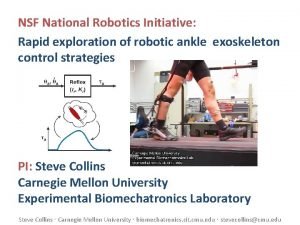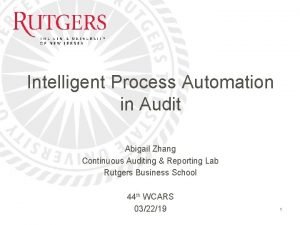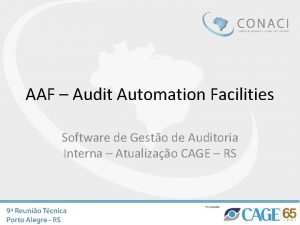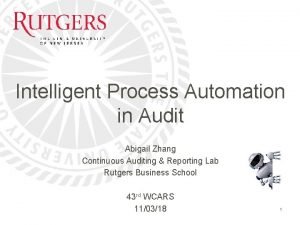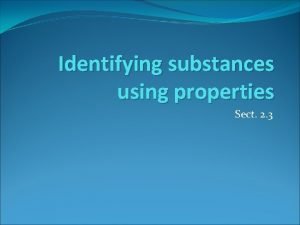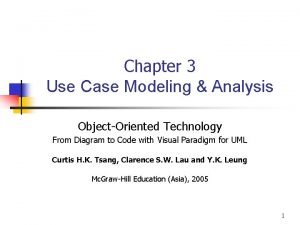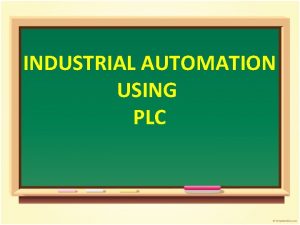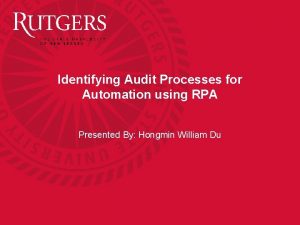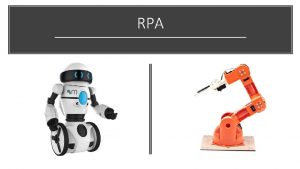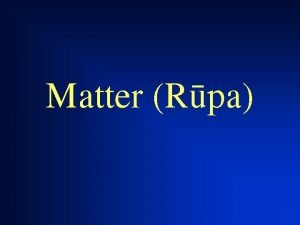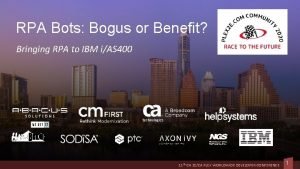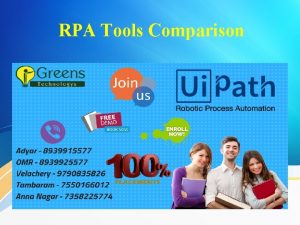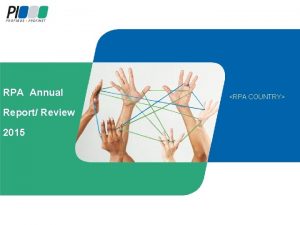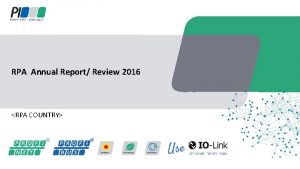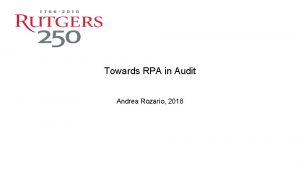Identifying Audit Processes for Automation using RPA Presented












- Slides: 12

Identifying Audit Processes for Automation using RPA Presented By: Hongmin William Du

Robotic Process Automation (RPA) • What is RPA ? – A programmed software that uses business rules and predefined activities to automate the execution of a combination of processes, activities, transactions and tasks

Where is RPA most applicable? • RPA can aid auditors in various parts in the audit process such as – – Reconciliations and substantive testing Assessments of Internal Controls Risk Assessment Substantive Testing • Which audit processes are suitable for automation?


Characteristics of Tasks Suitable for Automation • Characteristics: – – – High volume Repetitive Time consuming Prone to error Stable Environment

Overview of Framework

Step 1: Segment the Process • Segment the Audit Processes into several distinct activities • The goal of this step is to attempt to separate the simpler activities from the more complex activities in the process

Step 2: Classify the segments • Assign classifications based on the characteristics for each activity • Examples of characteristics: – – – High volume Complex Simple Repetitive Time consuming Prone to error

Step 3: Compare the Characteristics • Compare the assigned characteristics to the set of characteristics for activities that are best suitable for automation • Characteristics best suitable for automation: – – – High volume Stable Environment Repetitive Time consuming Prone to error

Step 4: Identify which segments have the highest potential for automation • Based on the comparison of characteristic, identify which segments of the process have the highest suitability for automation

Step 5: Simulate and Test the Automation of the selected segment • Finally we can simulate and test the automation of the selected segment using software's such as Ui Path or Automation Anywhere • If we find that the entire segment is not automatable, we can go back to step 1 and resegment the process

Thank You!
 Robotic ankle
Robotic ankle Adjective
Adjective Whats an adjective clause
Whats an adjective clause Identifying and non identifying adjective clauses
Identifying and non identifying adjective clauses Concurrent processes are processes that
Concurrent processes are processes that Continuous auditing workflow
Continuous auditing workflow Aaf audit automation facilities
Aaf audit automation facilities Continuous auditing workflow
Continuous auditing workflow Properties used to identify substances
Properties used to identify substances Used cases
Used cases Automating desktop applications using python
Automating desktop applications using python Library automation using rfid
Library automation using rfid Industrial automation using plc
Industrial automation using plc
